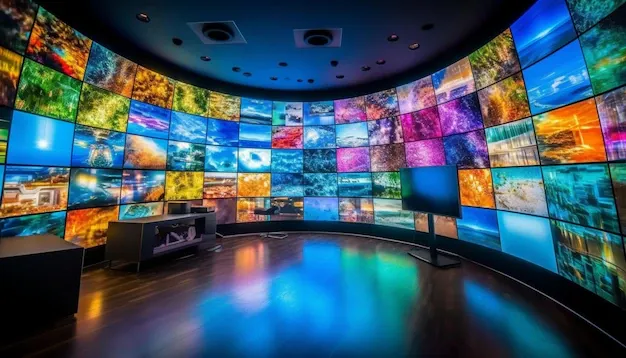
Get a Quote
What is the Difference between LED Wall and Video Wall?
Have you ever wondered about the magic behind those stunning display walls that light up events, malls, and concerts? LED walls and video walls play a crucial role in creating mesmerizing visuals, but what sets them apart? Let's break down the differences in simple terms.
What is LED Wall?
First up, the LED wall. Think of it as a giant TV made up of thousands of tiny LED lights. These lights work together to create high-resolution visuals that pop with color and clarity. LED walls are known for their flexibility, making them ideal for curved installations and unconventional shapes.
What's the secret sauce? LEDs (light-emitting diodes) are the heroes here. They emit light when an electric current passes through them, producing vivid images. LED walls are energy-efficient and boast a longer lifespan compared to traditional displays, making them a popular choice for outdoor events and advertising.
What is Video Wall?
Now, let's shift our focus to the video wall. Unlike the LED wall, a video wall is essentially a collection of individual display units, like TV screens or monitors, seamlessly arranged to form one cohesive display. Each screen, or tile, contributes to the overall image.
Video walls are versatile and can adapt to various sizes and resolutions. They excel in delivering a uniform viewing experience, making them suitable for applications ranging from control rooms to retail spaces. The modular nature of video walls allows for easy maintenance – just replace a malfunctioning tile without disrupting the entire display.
Differences Simplified
To sum it up, the key difference lies in the technology. LED walls use tiny light-emitting diodes to create visuals, while video walls consist of multiple displays working together. LED walls offer flexibility and energy efficiency, ideal for dynamic setups. On the other hand, video walls provide versatility and ease of maintenance, perfect for seamless, uniform displays.
Choosing the Right Fit
So, which one is right for you? It depends on your specific needs. If you're looking for a display that can bend and curve to fit unique spaces, an LED wall might be your go-to. For applications where uniformity and easy maintenance are crucial, a video wall could be the better choice.
Conclusion
In the world of visuals, LED walls and video walls are the unsung heroes, each with its unique strengths. Understanding these differences empowers you to make an informed choice based on your requirements. Whether it's the dazzling lights of an LED wall or the seamless unity of a video wall, the magic lies in finding the perfect fit for your visual spectacle.

